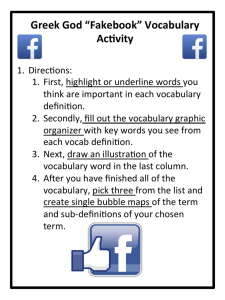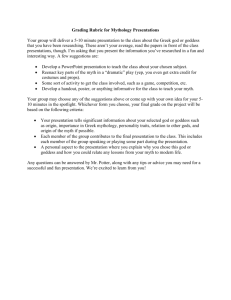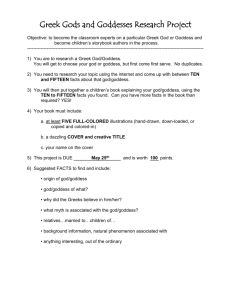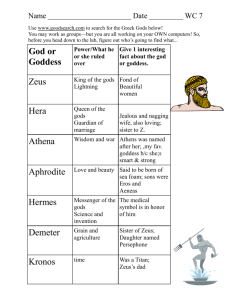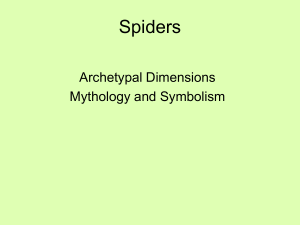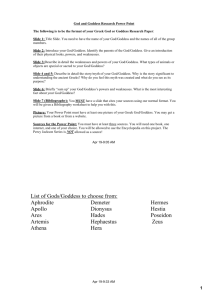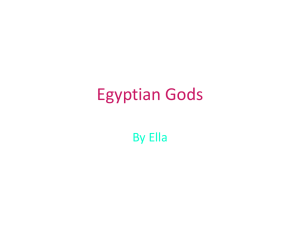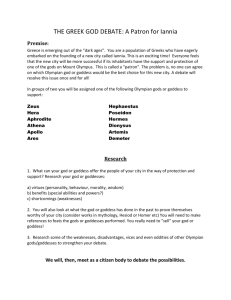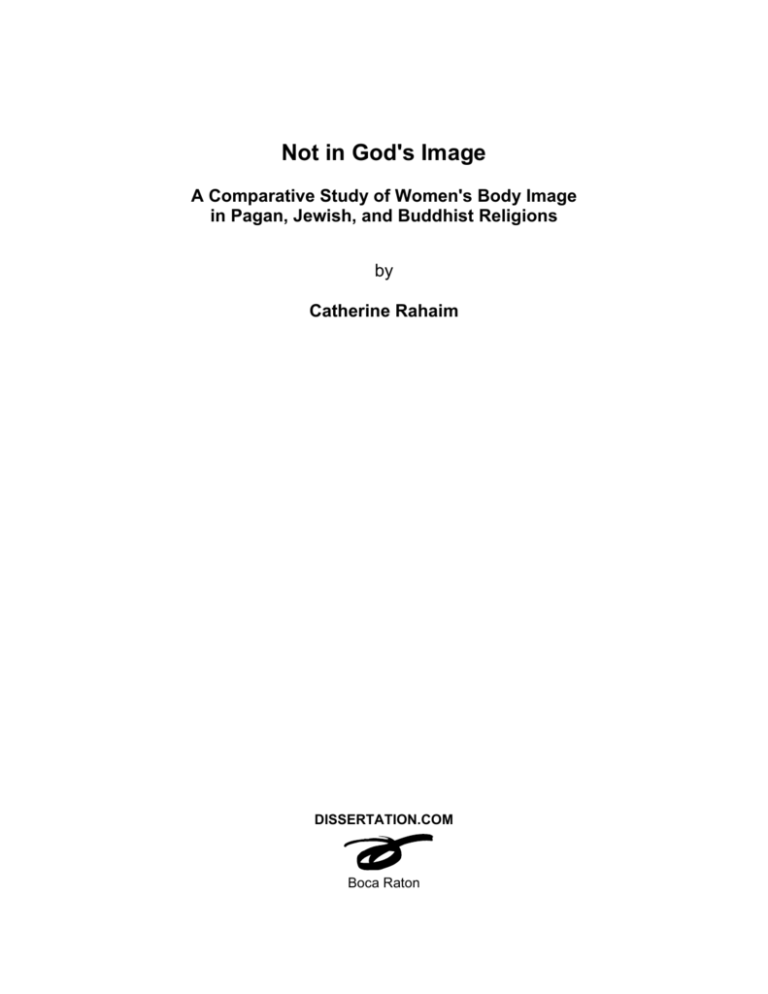
Not in God's Image
A Comparative Study of Women's Body Image
in Pagan, Jewish, and Buddhist Religions
by
Catherine Rahaim
DISSERTATION.COM
Boca Raton
Not in God's Image:
A Comparative Study of Women's Body Image in Pagan, Jewish, and Buddhist Religions
Copyright © 2004 Catherine Rahaim
All rights reserved.
Dissertation.com
Boca Raton, Florida
USA • 2007
ISBN: 1-58112- 373-6
13-ISBN: 978-1-58112-373-9
Not in God’s Image
A Comparative Study of Women’s Body Image in Pagan, Jewish, and Buddhist Religions
Catherine A. Rahaim
A Thesis in the Field of Religion
for the Degree of Master of Liberal Arts in Extension Studies
Harvard University
June 2004
Dedication
To Dave—my husband, my best friend, and my greatest supporter, and to
Elizabeth, Michelle, and Mom—in whom I find the greatest evidence of the image of
God.
Acknowledgement
I would like to express sincere appreciation to Dr. Paul D. Hanson of Harvard
Divinity School for his patience, assistance, and generosity in guiding me through the
research and development of my thesis paper. I am humbled by Dr. Hanson’s knowledge
of history and theology, and his skill as an educator.
ii
Table of Contents
Introduction…………………………………………………………………………...1
I. Woman as Mother Goddess………………………………………………………..3
Interpretations of Mother Goddess Iconography……………………………..3
Mythological Evidence of Mother Goddess Worship……………………….10
Women’s Status in Mother Goddess Areas…………………………………15
Power Affiliated with the Menstrual Cycle…………………………………18
Changing Attitudes Toward Women c. 9000 BCE…………………………20
Changing Roles for Women in Patriarchal Environment……………………26
Heritage of Mother Goddess Period…………………………………………28
II. The Role of Women in Ancient Greek Religion…………………………………31
Transition of Mother Goddess to Subordinate Deity………………………...31
Implications of the Goddess Transition for Greek Women………………….33
Women as Priestesses and Participants in Rituals…………………………...35
Festivals Inclusive of or Exclusively for Women……………………………38
Women as Intermediaries Between Men and Gods………………………….46
Conclusion……………………………………………………………………48
III. Women’s Body Image in Judaism……………………………………………….49
Women in the Old Testament………………………………………………...50
Asherah as an Example of Mother Goddess Transition………………50
Sophia as the Feminine Aspect of God……………………………….57
iii
Women in the Pentateuch…………………………………………….60
Women in the Temple and Rabbinic Periods………………………………...67
Women in Kabbalistic Theology……………………………………………..71
Conclusion……………………………………………………………………72
IV. Women’s Body Image in Tibetan Buddhism……………………………………74
The Buddha’s Acceptance of Women Clerics………………………………..74
Nuns in Tibetan Buddhism……………………………………………………76
Women in Old Buddhism……………………………………………………..79
Women as Mediums and Messengers…………………………………………81
Women Deities and Dakinis……………………………………………….….83
Gender as Handicap and Helper………………………………………………87
Women and the Western Version of Tibetan Buddhism……………………...88
Conclusion…………………………………………………………………….90
Summary and Conclusion……………………………………………………………..92
Bibliography…………………………………………………………………………..95
iv
Introduction
In our self-centered world, we tend to focus on progress, and we create a rubric to
quantify progress which is cemented in the values and aspirations we hold today. One
case in point is the connotation of “civilization.” Having satisfied the rubric requirements
of group living, division of labor, intellectual achievements like devising a calendar, and
technological achievements like use of metal, an area qualifies for the title “civilization.”
But civilization is not necessarily a goal; other forms of group living may, in fact, be
more satisfying and even, more peaceful.
The same scrutiny could be applied to religion. When a set of beliefs is deemed a
“religion,” the rubric applied, albeit, sometimes subconsciously, is organization,
institutional leadership, faith, and commitment. In contrast, we look into our past where
we find pantheons of gods and fantastic stories, and call that “mythology” – the
connotations being “allegorical” or “naïve” beliefs. Perhaps part of the reason is that
figures which today have less empowerment, excel in power in mythology – animals,
nature, and even, women.
As people became “civilized,” women got lost. Certainly most of the world’s
mythologies abound with stories of goddesses, and quite frequently, it is a goddess who
created all that is – people, nature, and other gods. History, on the other hand, is
laughingly called “his-story,” since so little written accounts exist which tell “her-story.”
Religion, too, is his-story, and women are a meager part of religious history.
But archeological excursions in the past half century have increased our
understanding of women’s placement in history and religion. Pairing the archeological
evidence with mythology allows us to entertain the theory that at one time god was
conceived as a woman. The greatest reason must have been her body – the fact that
women have menstrual cycles which parallel nature’s cycles, and women give birth.
The image of god as woman is foreign to our “sophisticated,” modernrubric minds because in our written past to our present time, male leadership and maleenvisioned god have been the norm. In ancient Greek society, and in developing Judaism
and Buddhism women struggled to find a place. But woman’s “place” in religion has
focused less on her inherent abilities and intelligence, than on her physical space.
Though she was once elevated for her body’s mysteries, women in these religions were
regulated, demoted, or, at the least, sanctioned because her body was viewed as a threat
to power and control - economically, politically, and socially. Examining the extent to
which a woman’s physical attributes and body image have determined her roles in
religion requires delving into archeology, mythology, and religious law or doctrine.
2
Chapter 1
Woman as Mother Goddess
Woman’s “place” in religion has focused less on her inherent abilities and
intelligence than on her physical space. Though she was once elevated for her body’s
mysteries, women in these religions were regulated, demoted, or, at the least, sanctioned
because the female form was viewed as a threat to power and control—economically,
politically, and socially. Examining the extent to which a woman’s physical attributes
and body image have determined her roles in religion requires delving into archeology,
mythology, and religious law or doctrine.
Interpretations of Mother Goddess Iconography
In addition to animistic beliefs, Paleolithic and Neolithic worshippers appear to
have reproduced the female form often enough to create a controversy among
archeologists and historians concerning the meanings behind those female
representations. That debate is worthy of research for many reasons. Any artifacts which
can be dated 9,000 or 25,000 or even 70,000 years into our past are rare and give us a
glimpse into a prehistory characterized by huge gaps in information. Artifacts refined
enough to be gender-specific by emphasizing certain physical attributes pose questions of
motive. Carol Christ examines cultural symbols and agrees with anthropologist Clifford
3
Geertz that symbols which are religious “define the deepest values of a society and the
persons in it.”1
Drawn and carved female images make up some of the earliest dated artifacts, and
some of these appear in configurations that resemble temple sites. One Upper Paleolithic
culture that developed into a Neolithic state is identified as Gravettian-Aurigna (or simply
Aurignacian) and has been traced from a plain in southern France that extends into
Siberia. Along several areas of that plain, female imagery dating to 70,000 BCE and later
has been excavated. In Dolni Vestonice, Russia, for example, mammoth skulls and tusks
incised with female likenesses and arranged in a grouping have been unearthed.2
Individual artifact specimens obtained there and in Austria and Spain have common
themes of plump female figures emphasizing large breasts and pregnant-like protruding
stomachs, although some are slim figures.3 Representing a later date of 35,000 BCE are
women likenesses, often amulets, of clay, ash, bone, and ivory from the same area.
These have disproportionately large breasts and vulvas.4 According to Marija Gimbutas,
there are over 3000 sites in southeast Europe from which approximately 30,000 miniature
sculptures of this type have been found.5 In Les Eyzies in southwest France, a fourteen-
1
Carol Christ, “Why Women Need the Goddess.” Politics of Women’s Spirituality, ed. Charlene
Spretnak (Garden City, New York: Anchor Press/Doubleday, 1982) 72.
2
Cynthia Eller, Living in the Lap of the Goddess (New York: Crossroad, 1993) 157.
3
Lotte Motz, The Faces of the Goddess (New York: Oxford University Press, 1997) 5.
4
Adele Getty, Goddess Mother of Living Nature (London: Thames and Hudson Ltd., 1990) 8.
5
Gerda Lerner, The Creation of Patriarchy (New York: Oxford University Press, 1986) 146.
4
inch reindeer antler identified by Abbe Breuil as “the Montgaudier baton,” was dated as
32,000 years old and is engraved with markings that he said were hunting images and
indiscernible scratchings. Alexander Marshack, with the help of enhanced technology
twenty years later identified the “scratchings” as the head of an ibex with crescent horns
and a budding flower as a vulva.6 Later, Adele Getty noted marks that indicate a
pregnancy lunar calendar,7 similar to a calendar located in California in a Yurok Indian
site.
Caves, which are the pallets of prehistoric art, also show female forms. Several
cave drawings in France are routinely analyzed as hunting scenes, but some, like Eisler,
maintain that many hunting scenes, such as those at La Ferrassie, Pergouset, and Laline,
are really abstract or naturalistic engravings and carvings of women’s vaginas.8 Stone
slabs with carvings of female figures on them were located face-down in a cave at Le
Roc, and in Lascaux and La Magdelaine, female nudes appear on cave walls near hunting
scenes.9
Pre-Aryan sites of Harappa and Mohenjo-daro in India, which date to the third
millennium BCE, have also been excavated and reveal similar female forms as those
found earlier in Europe and Asia. The forms sometimes appear human-like but more
often have an ethereal other-worldly aspect. The usual portrayals are those of a pregnant
6
Raine Eisler, Sacred Pleasure (New York: HarperSanFransisco, 1995) 54-55.
7
Getty 146.
8
Eisler 55.
9
Getty 9.
5
figure, mother and child in an embrace, semi-nude figures bedecked with crescent-shaped
jewelry, and nude figures clasping breasts and depicting the yoni, or vagina.10 It was
fairly common in ancient times to worship the yoni as an object of great mystery and a
sanctuary of the divine.
The island of Crete, whose Minoan civilization flourished in the third and second
millennium BCE, has revealed murals and artifact likenesses of the female, regularly
enthroned, and physically exaggerated.11
The Neolithic site of Jericho (9550 BCE) when excavated revealed images of the
female form inside every house and a temple-like structure containing a stone carved
with breasts.12
In Turkey’s earliest cities of Hacilar and Catal Huyuk, dating about 5600 BCE,
James Mellaart excavated human representations that were almost exclusively female
figures. One terra cotta figure shows a female figure with huge breasts and belly, seated
and giving birth.13 In other plaster reliefs the female is birthing bulls, and in some, wild
animals protrude through the female breasts, and teeth and tusks take the place of
nipples.14
The iconographic evidence provides the framework of an ongoing debate that
erupted when, in the 1960s and 1970s, Merlin Stone and others interpreted the artifacts as
10
Getty 14.
11
Getty 21.
12
Getty 21.
13
Getty 12.
14
Getty 11.
6
signs of widespread ancient goddess worship by matriarchal societies.15 That theory is
refuted vehemently by some and tempered by others.
A number of researchers challenge Mother Goddess and matriarchy theories that
are formulated on these artifacts and cave drawings, citing misinterpretation of fat
females for pregnant females and even feminist exaggeration. Robert Sheaffer’s article
entitled “Feminism, The Noble Lie,” makes his stance clear. However, rather than
dealing directly with the archeological evidence, he sees the concept of a Mother
Goddess as one more example of what he calls “male-bashing.” He claims that not only
is there insufficient evidence to support a goddess theory, but that merely challenging the
Mother Goddess theory makes one appear unchivalrous and guilty. Without providing an
alternative theory, Shaeffer dismisses Mother Goddess talk as simply deceit.16 Lotte
Motz does address the evidence directly, and she also takes umbrage with the conclusion
drawn by Stone. While she, as well, notes the prominent female features on most
statuettes, she claims they do not give indications of pregnancy, a condition that is
appropriate to creation. Although the woman’s body does “bulge . . . her thighs and
buttocks, not organs of reproduction, are proportional in size . . . Nor need long, sagging
breasts,” [she claims] “point to the state of pregnancy.”17 Motz also repudiates the idea
of caves and cave art focusing on women’s issues. She finds no listing of female
15
Merlin Stone, When God Was a Woman (New York: Harcourt Brace Jovanovich, 1976) 13-15.
16
Robert Sheaffer, “Feminism, The Noble Lie.” Free Inquiry. Online. Expanded Academic
ASAP. Gale Infotrac. Spring 1995: v15 n2 p13 (5).
www.http://web1infotrac.galegroup.com/itw/infomark 15 Nov 2002.
17
Motz 10.
7
figurines unearthed in caves, but in settled areas nearby, such as near Laussel.18 Sally
Binford also discusses caves, but she points out that cave art includes pictures of animals
as well as women; to draw religious conclusions from this art is, in her words, “silly.”19
Cynthia Eller agrees on the issue of diversity of subjects found in the drawings and
figurines of the ancient Near East and ancient Europe, and she lists as subjects in addition
to women, “wavy lines, chevrons, triangles, snakes, butterflies, birds, fish, spiders, eggs,”
and even phalluses.20
There are more moderate voices which take issue with the Mother Goddess
concept. One is Adele Getty who is actually an advocate of the Mother Goddess theory
but takes exception to the idea of matriarchy. Total supporters of the theory maintain that
during the third and second millennia, even the role men played in reproduction was not
understood, so women were thought to be the only parent. But Getty describes a
sculpture from Catal Huyuk which shows on one side a couple in an embrace and on the
other, a mother and child, which may imply knowledge of reproduction. In addition, she
says, at this particular site there were no phallic images or vulvas in representations.21
Finally, Judith Baskin who concentrates her work in this area on its connection to
emerging Judaism, agrees that there are many images of females holding breasts in art
forms from the eighth and seventh centuries BCE, but rather than necessarily implying
18
Motz 185.
19
Sally Binford, “Are Goddesses and Matriarchies Merely Figments of Feminist Imagination?”
The Politics of Spirituality, ed. Charlene Spretnak (Garden City, New York: Anchor Books/Doubleday)
559.
20
Eller 160.
21
Getty 13.
8
Mother Goddess worship, it “implies reverence for or appeal to the power of the feminine
in everyday Israelite religious life.”22
Given the uncanny recurrence of similar women body images found in these early
archeological sites, it is appropriate to hypothesize that woman’s body was deified. In
addition, since the emergence of life—in animal, human, or nature’s form—from these
female figures is a familiar theme, the female because of her body must have been linked
to creation, not to just agricultural fertility. I find these temples and images are evidence
of a female deity or Mother Goddess in those Neolithic sites excavated in southern and
western Asia and Europe. Even the cave, Getty maintains, was perceived as an earthly
womb, and those cave paintings at places like Lascaux show more than the connection
between hunting rites and appeals to a Mother Goddess.23
Architecture and accouterments linked to the female figures indicate the divine
aspect of the figure and its connection to nature, particularly the moon. In Harappa, for
example, there are female figures whose heads are adorned with crescent-shaped
headdresses, are bird-like, or have goat’s horns—“a universal symbol of renewal often
associated with the crescent moon.”24 The Jericho settlement was contrived in a crescent
shape with beehive-shaped houses. These recurrent shapes reinforce the idea of the
parallel cycles of womanhood and the moon. Getty speculates that women may have
22
Judith R. Baskin, Jewish Women in Historical Perspective (Detroit: Wayne State University,
1998) 37.
23
Getty 9.
24
Getty 14.
9
seen a connection between the rhythms of nature and their internal biological rhythms,
thereby forging the earliest basis of science and religion.25
Mythological Evidence of Mother Goddess Worship
Mythology reflects the spiritual beliefs and cultural norms of a developing
society, and if Mother Goddess worship was widespread, it would have to be part of the
oral tradition. And it is. That oral tradition was preserved—although, according to
Albert Lord, in a less dramatic and personal way—when the written tradition began.26
The heartland of Mother Goddess worship was at least in three of the four first
civilizations: Egypt, Mesopotamia, and India. The larger concentric circle of believers
enveloped Turkey, Crete, and Greece. The Mother Goddess was clearly more than a
fertility figure, and her adherents made up more than just a cult of followers.
Mythologies of these areas identify her in many roles—lawmaker of the universe,
prophetess, provider of human destinies, inventor, healer, hunter, warrior27—and most
importantly, creator and Queen of Heaven. Joseph Campbell says that mythology
25
Getty 8.
26
Albert Lord, The Singer of Tales. (New York: Atheneum, 1965) 124-138.
27
Stone 3-4.
10
presents her as representing time and space, that everything, including the gods is created
by her, and that she is identical with the universe.28
In the Fertile Crescent, as elsewhere, the goddess figure is identified by many
names. According to Frank Cross, polytheism in the Near East was characterized by a
syncretistic impulse, wherein major or minor deities having similar characteristics and
functions merged or were shared by surrounding cultures.29 For example, Ninhursag(a)
of Sumer was also known as Mah, Ninmah, Nintu(r) and Aruru, and she was especially
noteworthy for creation and resurrection.30 Thorkild Jacobsen, who traces 4th to 2nd
millennium Mesopotamian religion explains that the title “Nintur” means “Lady Birth
Hut,” and it is for that creative role that this goddess was revered. The “tur” part of the
name was written at one time with a pictogram of a cattle pen where cows birthed, and in
Sumerian, “tur” was the word for “womb.” In Akkadian, “Nintur” was “Sassuru,” “The
Lady of the Womb,” and her symbol, like the Greek “omega,”—Ω—represented the
uterus of a cow.31 Early graves in the city of Ur (4th millennium BCE) include
Ninhursag/Nintur’s image usually spreading her knees as a birth giver32 and support the
idea that she was one of the most powerful deities of a trilogy that also included An and
Enlil. In 4th millennium reliefs, Nintur is nursing a child, while other children peek from
28
“Joseph Campbell and the Power of Myth/Interview With Bill Moyers.” 1989. PBS. WGBH,
Boston. 2 Jan 2003.
29
Frank Cross, Canaanite Myth and Hebrew Epic (Cambridge: Harvard University Press, 1973)
30
Getty 17.
31
Thorkild Jacobsen, The Treasures of Darkness (New Haven: Yale University Press, 1976) 106-
32
Jacobsen 108.
49.
107.
11
around her dress, and embryos surround her.33 Although she was considered the creator
of gods and men, she had no political role.
It was with Inanna (Innin, Nana) from Sumer, however, that the first mention of
rising from the dead appears in mythology, and it reappears in the Babylonian epics
concerning another goddess figure, Ishtar (Ishara). Jacobsen questions the chronology of
these two figures and, although it is unclear, suggests that Inanna may have been of
Semitic origin and was “borrowed” from Ishtar.34 Inanna was worshipped in Sumer as,
among other things, a goddess of rain, and the clouds were perceived to be her breasts
from which life-sustaining rain poured. In addition, there are several cuneiform tablets
which reveal stories about her ill-fated, but much romanticized, marriage to Dumuzi, a
shepherd who wooed her with the help of Inanna’s brother Utu. One wedding text called
“The Blessing of the Bridegroom” finds Inanna praising her young body soon to be made
one with her new husband. She first likens her pubic triangle to a ceremonial barge of
heaven (the crescent of the new moon) and her pubic hair as mooring ropes, and later she
compares her body to a virgin plot in the desert which will soon be cultivated:
My encased parts so nailed down as with linchpins to a big cart, (my
crescent-shaped) “Barge of Heaven” so well belayed, full of loveliness,
like a new moon, my untilled plot, left so fallow in the desert, my duck
field so studded with ducks, my hillock land, so well-watered, my parts,
piled up. I, being but a maiden, who will be their ploughman? My parts,
well-watered lowlands, I being but a lady, who will put plough oxen to
them?35
33
H. Frankfort, H.A. Frankfort, John Wilson, and Thorkild Jacobsen. Before Philosophy
(Harmondsworth, Great Britain: Penguin Books, 1949) 158.
34
Jacobsen 140-141.
35
Frankfort 45.
12
Unfortunately, Dumuzi’s death soon after their marriage overwhelms Inanna, and she
ventures to the netherworld in search of him. This myth, also recorded on the Urek Vase
of the 4th millennium, appears to have been “the central event of the rite of sacred
marriage.”36 Returning from the netherworld is not easy for Inanna though, and in at
least one myth, Inanna is allowed to leave only when Dumuzi and his sister agree to take
half-year turns to remain in the land of the dead.37
North of Sumer, Ishtar was seen as the divine creator. An address dated between
the eighteenth and seventh centuries BCE clarifies what people assumed was her role:
Unto her who renders decision, Goddess of all things, Unto the Lady of
Heaven and Earth who receives supplication; Unto Her who hears petition,
who entertains prayer; Unto the compassionate Goddess who loves
righteousness; Istar the Queen, who suppresses all that is confused. To the
Queen of Heaven, the Goddess of the Universe, the One who walked in
terrible Chaos and brought life by the Law of Love; And out of Chaos
brought harmony.38
Inanna and Ishtar share identity with Asherah, the Great Goddess of the Canaanite area.
In fact, all three bore the titles of goddess of rain, of war, and of the morning and evening
star.39 Asherah, whom Stone claims was given a new name (Boseth) and male gender by
the time of the writing of the Hebrew Bible Chronicles, was also known as Anahita, Anat,
Ashtart, Astarte, Ashtoreth, Attar, and Hathor.40
36
Jacobsen 26.
37
Jacobsen 57-61.
38
Mary Pat Fisher, Living Religions (Upper Saddle River, NJ: Prentice-Hall, 1999) 37.
39
Jacobsen 140-141.
40
Stone 9.
13
In Egypt, the whole heavenly sphere was identified with Nut, who swallowed the
sun at night, allowed it to pass through her body and released it at daybreak. She was
also called the Queen of Heaven and wife of Geb, the earth.
Pre-Greek sites and ancient Greece have multi-levels of Mother Goddess images.
In the earliest one, the Pelagian myth identifies the Great Mother as Eurynome, who was
alone in the beginning of time when there was nothing but void. Her motions created
chaos, and from that, air, which she rubbed to create a serpent. An egg was the product of
their pairing, an egg that, when hatched, created all things, and Eurynome organized time
and space.41 At pre-Greek sanctuaries, a goddess identified as Gaia was worshipped as
the goddess of divine revelation,42 and it is she whom Hesiod described in his Theogany
as the divine creator. Later, Demeter, whose name may even linguistically refer to
“mother,” evolved from a fertility goddess to “the mistress of the human quest for
salvation, a goddess of the life of women, and the creator.”43 As such, Demeterworshippers created beehive tombs in Greece to reflect her title as pure Mother Bee and
her priestesses were called melissae, plural of “bees.”44
In India, the Goddess Sakti has survived somewhat intact as the Goddess of
Energy, and in sacred texts, as the universal creator. “According to French Indologist
41
Getty 6-7.
42
Motz 125.
43
Motz 137-138.
44
Getty 11.
14
Alain Danielou, she is the origin of the phenomenal world, and the conscious plan of
creation.”45
Fisher, utilizing the reinterpretations of archeological sites during the 20th century,
notes several other world locations and their Mother Goddess equivalents: Nu Kwa of
China, Coatlique of the Aztec peoples, Fregja of Scandinavia, and Great Spider Woman
of the Pueblo peoples.46
Women’s Status in Mother Goddess Areas
Belief in and awe of the female deity and her creative powers were transferred to
women whose reproductive cycles yielded life as did the deity’s. That accounts,
Herodotus says, for the great respect accorded to women in Egypt. But transferring that
respect into political power and leadership of the community, as best-known proponents
Marija Gimbutas and Riane Eisler do, does not necessarily follow. Except for Stone’s
contention of ritual regicide, I find no evidence of political leadership by women in
Mother Goddess groups. James Mellaart, who excavated the Anatolian sites, saw no
evidence of central authority, military leadership, or, in fact, even warfare and sacrifice.
Instead he found evidence of worship of women.47 Although the theory of ancient
matriarchies has little proof, clearly women had social and economic powers resulting
from the respect accorded them through biology. Archeologists James Frazer and
45
Getty 6.
46
Fisher 37.
47
Lerner 34.
15
Margaret Mead agree that coitus was not initially understood as associated with
childbirth.48 Spretnak points out that among some native Australians of the 20th century,
it was believed that women were impregnated by the wind.49 Since parentage was only
clearly the woman’s domain, matrilineal societies seem logical; but this refers to lineage
tracing and not necessarily political leadership. Even in matrilineal societies, though,
decisions emanate from the woman’s family (usually her brother); the decision making
still rests with males.50
Women’s burials and women statues also indicate matrifocal societies. Women in
Catal Huyuk and Hacilar were buried adorned and separate from men and children who
were buried in clusters. The snake symbolism is part of the matrifocal spirituality, too.
Snakes growing and shedding their skins were paired with women’s monthly cycles.
Agriculture, thought to have been the realm of women, was integral for the tribe’s
survival, and this, as well, gave women control over distribution of the food supply.
Religious power due to the unique association with the goddess was also
women’s. Cuneiform records from Sumer indicate that the women dominated the
priestly hierarchy in sheer numbers.51 Some women actually lived in the temple complex
which was the controlling agency for recording and distributing land and animals.
48
Stone 11-12.
49
Charlene Spretnak, introduction, Politics of Women’s Spirituality (Garden City, New York:
Anchor Press/Doublday, 1982) xii.
50
Binford 345.
51
Getty 18.
16
Ritualistic and sacred sex as a means of raising spiritual energies52 may have been an
activity carried on there, and the women involved were identified as sacred women; later,
after patriarchy replaced Goddess worship, they were called temple prostitutes.53
As a consequence of women’s power in Goddess religion, some mythologies and
rituals describe male roles as imitative of women’s bodies. Castration is one such ritual
that is part of mythological stories. In Greek mythology, the Titan Cronus castrated his
father Uranus to take his place. In Hittite mythology, Kumarbi castrated reigning Anu.
Isis, in Egyptian mythology, failed to find her husband Osiris’ genitals when she
attempted to piece together the dismembered parts of his body. According to Merlin
Stone, there is evidence of voluntary castration of priests in Mother Goddess areas of
Anatolia, Crete, Egypt, Rome and Mesopotamia.54 Regicide, ritualistically and literally,
may have been practiced, on kings who had fulfilled their function in sexually serving the
Mother Goddess or her functionaries. In Hebrew law explained in Deuteronomy 23:1, a
male without a penis cannot be a member of the congregation. “No one whose testicles
are crushed or whose penis is cut off shall be admitted to the assembly of the Lord.” That
may have been a way of separating those Hebrew men who worshiped Yahweh from
those who worshiped the Goddess.55 In addition, it is not unusual to find male groups,
for example, aborigine groups in Africa as well as early Hebrews, which imitated
52
Fisher 38.
53
Stone 161.
54
Stone 150.
55
Stone 151.
17

